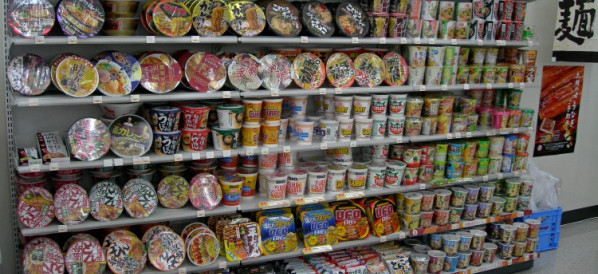 1 Terms
1 TermsHome > Terms > Macedonian (MK) > мaргарин
мaргарин
Developed in the late 1800s as a butter substitute, margarine (which is less expensive but not as flavorful as butter) is made with vegetable oils. In order for margarine to become solid, the oil must undergo a chemical transformation known as hydrogenation — indicated as hydrogenated (or partially hydrogenated) oils on a label. During hydrogenation, extra hydrogen atoms are pumped into unsaturated fat, a process that creates trans fatty acids and converts the mixture into a saturated fat, thereby obliterating any benefits it had as a polyunsaturate. Some researchers believe that hydrogenated oils may actually be more damaging than regular saturated fats for those limiting cholesterol in their diets, but the jury's still out on that debate. Those margarines lowest in cholesterol are made from a high percentage of polyunsaturated canola, safflower or corn oil. To make this butter substitute taste and look more like the real thing, cream or milk is often added. Food coloring, preservatives, emulsifiers and vitamins A and D are also common additives. Careful label scrutiny is advised because the ingredients affect everything from flavor to texture to nutritive value. Regular margarine must contain 80 percent fat. The remaining 20 percent consists of liquid, coloring, flavoring and other additives. Margarine is available salted and unsalted. So are butter-margarine blends, which are usually proportioned 40 to 60 percent respectively. Soft margarine is made with all vegetable oils (no animal fats) and remains soft and spreadable when cold. Whipped margarine has had air (which sometimes can equal half the volume) beaten into it, making it fluffy and easy to spread. Because of the added air, it cannot be substituted for regular margarine in baked goods. So-called liquid margarine is soft enough to be squeezable when cold and comes in pliable bottles made specifically for that purpose. It's convenient for basting and for foods such as corn on the cob and waffles. There are also many reduced-fat margarines on the market today. These products range from about 25 percent to 65 percent less fat than regular margarine. There's even fat-free margarine, the ingredients of which include gelatin, rice starch and lactose. The first ingredient listed on reduced-fat margarine labels is water, which means they can't be substituted for regular margarine for baking and frying, and which also means they can make toast soggy. Margarine comes in 1-pound packages — either in 4 (4-ounce) sticks or in 2 (8-ounce) tubs. It's also available in 1-pound tubs. All margarine readily absorbs flavors and therefore should be wrapped airtight for storage. Refrigerate margarine for up to 2 months; freeze for up to 6 months. In its early days, margarine was also known as oleomargarine. See also butter; fats and oils; label terms.
- Del af tale: noun
- Synonym(er):
- Blossary:
- Branche/domæne: Culinary arts
- Category: Cooking
- Company: Barrons Educational Series
- Produkt:
- Akronym-forkortelse:
Andre sprog:
Hvad vil du sige?
Terms in the News
Featured Terms
инстант тестенини
Се сушат или precooked тестенини сплотена со нафта и често се продаваат со пакет на арома. Сушен тестенини обично се јаде по се готви или натопена во ...
Bidragyder
Featured blossaries
Browers Terms By Category
- Bridge(5007)
- Plumbing(1082)
- Carpentry(559)
- Architecture(556)
- Flooring(503)
- Home remodeling(421)
Construction(10757) Terms
- Mapping science(4042)
- Soil science(1654)
- Physical oceanography(1561)
- Geology(1407)
- Seismology(488)
- Remote sensing(446)
Earth science(10026) Terms
- Chocolate(453)
- Hard candy(22)
- Gum(14)
- Gummies(9)
- Lollies(8)
- Caramels(6)
Candy & confectionary(525) Terms
- Poker(470)
- Chess(315)
- Bingo(205)
- Consoles(165)
- Computer games(126)
- Gaming accessories(9)
Games(1301) Terms
- Cooking(3691)
- Fish, poultry, & meat(288)
- Spices(36)





